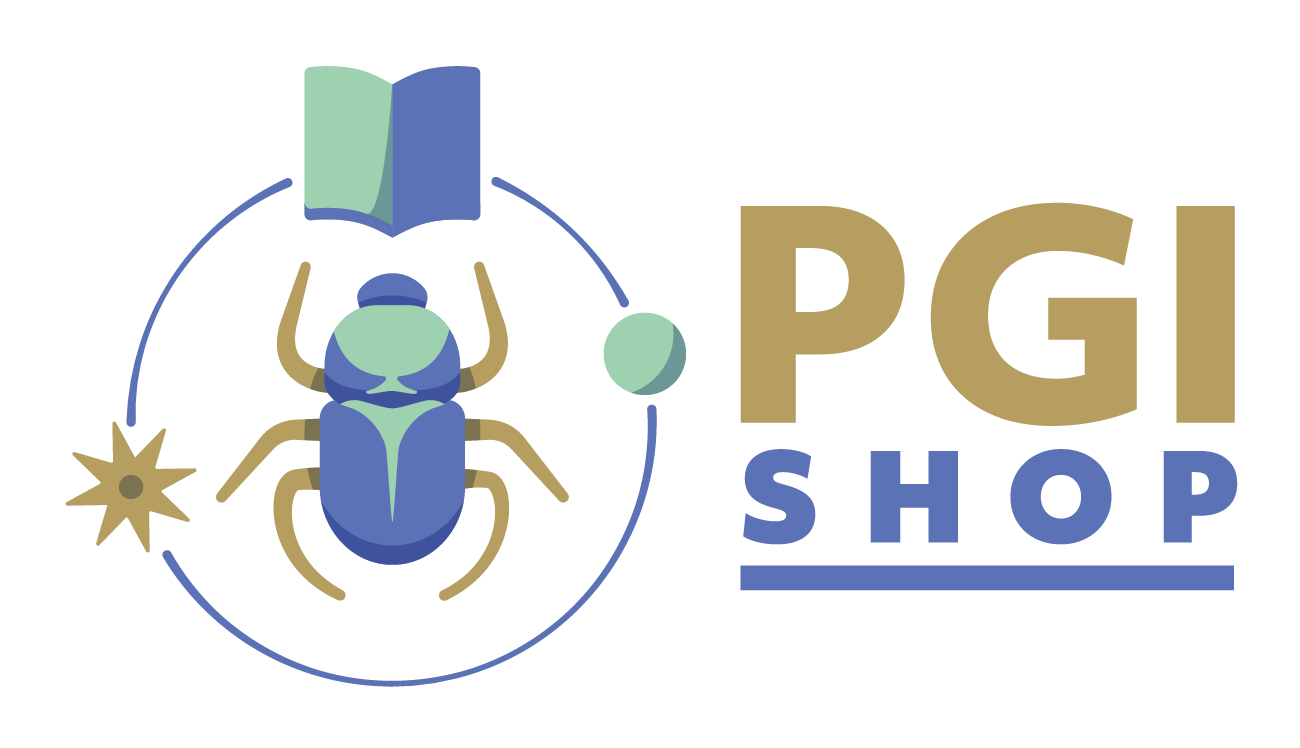Papyrus Bookmark - Horus painted
painted bookmark 5 cm x 19 cm in protective cover and decorative ribbon
PGI bookmark
made of hand laid papyrus, manufactured in Egypt
silkscreen motif, cut edge
Horus motif
Horus was a major god in the early mythology of Ancient Egypt. Originally a sky god, he was also a king god, as well as a war god, a world or light god and protector of children.
Images of the god Horus are certainly among the most numerous of any god in Egypt. He is almost omnipresent in texts as well as in pictorial representations. Horus is depicted as a falcon or also as a standing man with a falcon's head, sometimes wearing a double crown.
Horus has undergone numerous changes in the historical development of Egyptian mythology. Different forms of beings in the shape of a falcon emerged, each of which is embedded in its own myth and therefore has different characteristics and places of worship. The entire myth surrounding Horus is therefore very complex and sometimes appears very complicated.
In his significance as the emblem of a victorious people, Horus advanced to become the god of war and the war-bringing leader, which gave rise to the belief that the pharaoh was his earthly embodiment. From this time on, the kings of Egypt carried the falcon god Horus in their royal titulature.
Our papyrus offer
We offer bright, hand-laid natural papyrus from Egypt. From the size of a bookmark, over A4 and A3 up to oversizes of 92 x 192 cm, as well as various papyrus rolls, you are sure to find the right papyrus sheet. The design possibilities with papyrus are manifold. It can be inscribed with hieroglyphics or painted with various motifs. Tempera or watercolours, ink or felt-tip pens are suitable; it can even be printed with an inkjet printer.
Papyrus is a natural product
In the Nile Delta, papyrus leaves are still produced in the traditional way. Families in the countryside harvest the papyrus stems, which can grow up to 6 metres high, and process the raw material into papyrus leaves with great skill. Carefully crafted papyri are produced in several steps, which always have an individual, handcrafted character.
The history
Papyrus has been produced and used as a writing material in Ancient Egypt since the 3rd millennium BC. It was always a highly valued product whose sole marketing rights lay with the Pharaoh. The German word "Papier" goes back to the Greek word "pápyros", which in turn is based on the ancient Egyptian word "pa-en-per-aa", which roughly means "the pharaoh's".
If papyrus is stored in a dry place, it has a very long life. Thus, papyrus scrolls or fragments that provided information about life in Ancient Egypt were and are still being found. The most famous papyrus scrolls are probably the Herculaneum Papyri, which were buried and preserved by the massive eruption of Vesuvius in 79 AD. Another 400,000 papyri from the ancient Egyptian Oxyrhynchus are still waiting to be deciphered and will once again bring much of interest to light. Julius Caesar is probably responsible for the greatest loss of knowledge in history. His soldiers set fire to the library of Alexandria, destroying thousands of important papyrus manuscripts.
Fair trade with Egypt
PGI buys Egyptian products directly from the producer. This allows us to bypass traders' stations and offer our customers favourable prices. But the Egyptian producers also benefit from this direct marketing, they achieve much higher prices for their products. We regularly visit our partners in Egypt and discuss the upcoming needs on site.

